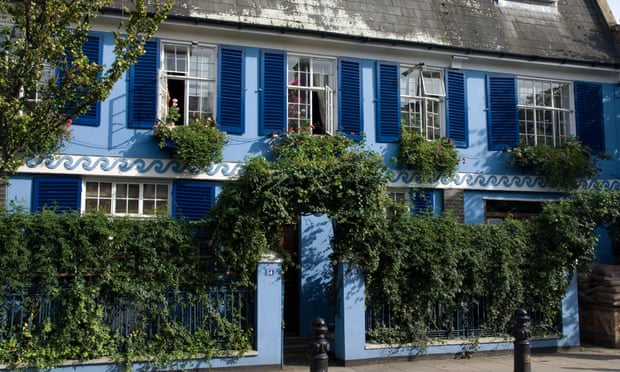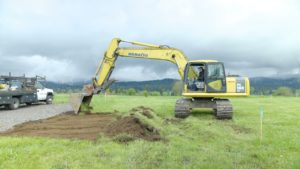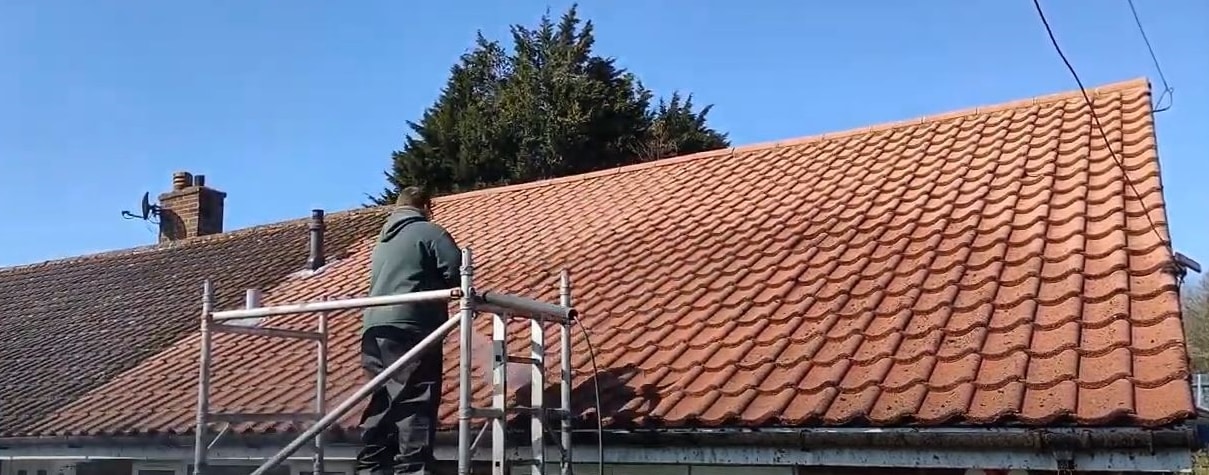‘A lot of challenges’: can housing industry build homes habitable in high temperatures? | Construction industry
6 min read
As any person sweltering in the present Uk heatwave can attest, the country’s housing stock is woefully unsuited to heat.
Substantially of it is antiquated, courting from a time when the priorities were shielding from the chilly and rain. But most new-create attributes are equally unready for experts’ predictions that, by the middle of the century, there will be temperatures on the amount of summer months 2018’s highs each and every other yr.
The climate improve committee warned in a report final calendar year that far more than 570,000 residences experienced been made since 2016 that were being not resilient to large temperatures – and nor ended up a even more 1.5m because of to be designed around the adhering to five a long time.
The federal government advisers accused ministers of failing to act to protect people today from rising temperatures that “could even go away many present and new households uninhabitable”.
The dilemma is fatal major, as susceptible folks wrestle to preserve amazing in their personal beds. The committee famous that 2020’s heatwave in England killed a lot more than 2,500 people today, and warns that the selection of heat-connected deaths could triple by 2050.
Heat not only poses a danger to life but also to the structural integrity of properties, leading to partitions to crack. In 2018 – the joint hottest Uk summertime so significantly along with 1976, 2003 and 2006 – there was a spike in subsidence as the soil under properties dried out and contracted, with a lot more than 10,000 homes subsequently generating insurance policy claims worth £64m in just a few months.
Critics accuse housebuilders, home developers and the governing administration of currently being gradual to reply. “The housing marketplace is very traditional and aged-fashioned in adapting and there are a great deal of issues that we will need to deal with close to zero-carbon and foreseeable future-proofing,” claims James Knight, of style and design and engineering consultancy Arcadis.
So how can the sector and region react to the rising danger posed by significant temperatures?
Retrofitting outdated properties
The most apparent measure to mitigate from warmth is air conditioning, but it is prohibitively expensive in conditions of installation and working expenditures, and operates inefficiently in draughty more mature houses. The electric power-hungry devices also boost emissions – fuelling international heating and creating the all round difficulty worse.

Gurus counsel the Uk ought to understand from countries where by excessive warmth is a lot more typical, wherever households have shutters or motorised blinds to preserve out the sun and white surfaces to reflect the warmth. Knight details out that all-around the Mediterranean, “people depart their houses shuttered all day, with the home windows open driving. How lots of of us depart the curtains shut on south and west-experiencing home windows when we go to perform on a sunny day?”
Similar “passive measures” demanding minimal use of strength and gas to great homes consist of increasing purely natural air flow and growing insulation, which has the double profit of minimizing electrical power charges in winter.
Building out heat
There are even a lot more effective actions that housebuilders can introduce at the organizing and design stage: making certain the dwelling and windows are oriented and positioned to limit publicity to direct sun minimizing glazing adding shady trees and crops and putting in an air source heat pump, which can be utilised to neat a dwelling as effectively as heat it.
Other cooling capabilities involve windcatchers, roof-mounted products influenced by Persian architecture that use the wind to drive new breezes into a room and expel stale air, and solar chimneys – tall buildings with a darkish surface area developed to take in photo voltaic radiation, producing a rising column of heated air that in convert keeps a air flow system flowing.
The most state-of-the-art case in point of this theory is the “passive house”, an airtight, highly insulated constructing that relies practically fully on passive actions these types of as sunshine, shading and air flow to ensure a regular temperature. They often function a air flow unit in the attic with two air collectors: one particular for amazing outside air and a further for heat indoor air, which are circulated all over the property to preserve the temperature even.
“A passive dwelling is the greatest answer wherever you have a purely natural flow of air via it,” states Bob Ward, deputy chair of the London Climate Alter Partnership. “It should really come to be the guideline for how you build for zero carbon and overheating.”

Meanwhile Barratt, Britain’s biggest housebuilder, is trialling the Zed House, a zero carbon strategy house developed in partnership with 40 business companions and the College of Salford. It has an air resource warmth pump and 95 sensors to acquire facts about the dwelling, including on air quality. Barratt claims the pilot is the initially step to attaining its pledge that all of its new households will be zero carbon by 2030.
What about larger sized properties?
Heat is not just an concern for domestic properties – much too quite a few workplaces however count on strength-guzzling air conditioning and have big glazed facades. “Huge glass buildings are just not a excellent idea – that is a greenhouse,” says Ward. “You have to design glass in a way that keeps out the solar.” A development is now growing for setting up louvre home windows on industrial properties: parallel glass slides in frames that can be tilted open or shut to improve ventilation.
Once again, countries in Europe are major the way. The Edge, a condition-of-the-art business office creating created in Amsterdam for Deloitte in 2014, has been held up as an illustration of how to reimagine workspaces. It deploys dynamic windows, computerized shades, photo voltaic panels on the south side to hold immediate solar out, underground thermal energy storage pumps to pump warm or cold drinking water into or out of the setting up, and 28,000 sensors monitoring motion, lighting stages, humidity and temperature.
What is the govt accomplishing?
Right up until now, the UK’s concentrate on making effectiveness has been on how to increase draughty properties, specially in light-weight of rocketing electrical power costs – but past 12 months, the authorities included a section on overheating to developing polices for the to start with time, Aspect O, which arrived into outcome final thirty day period. It urges housebuilders to make realistic provision to restrict solar gains in summer months and “provide an satisfactory suggests to clear away warmth from the indoor environment”.
Sign up to the every day Business Today electronic mail or abide by Guardian Business on Twitter at @BusinessDesk
Having said that, the housebuilding field is not happy with the new regulations, complaining they could drive currently accredited jobs back again to the drawing board. Stewart Baseley, the Residence Builders Federation’s government chair, wrote to the government in early June to complain that “the new laws are riddled with impracticalities and may perhaps demand tens of 1000’s of permissioned households to go back again via the preparing process”.
And what does Ward assume about Portion O? “It must aid while who understands how well it will be enforced,” he claims.







.jpg)